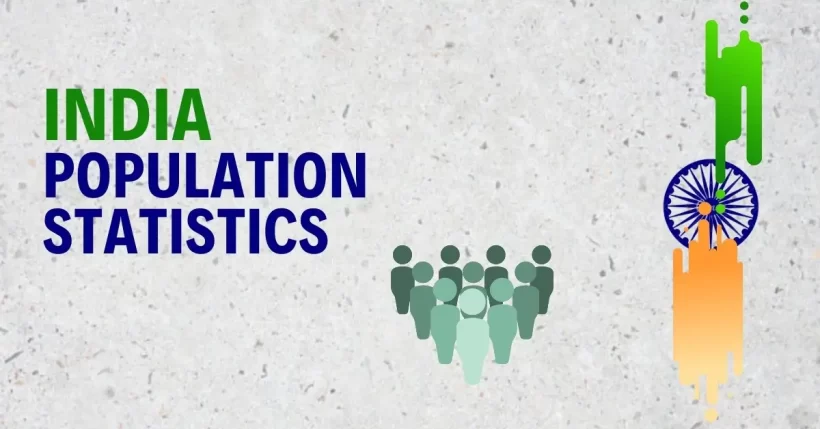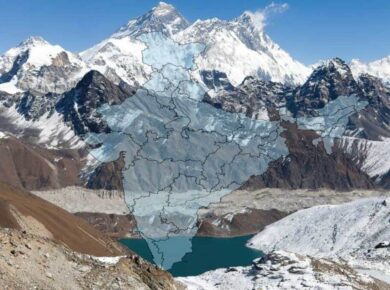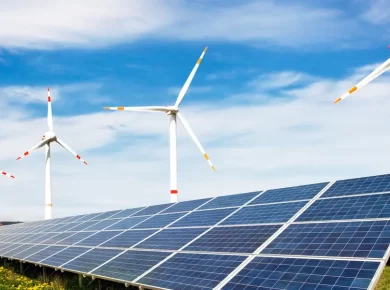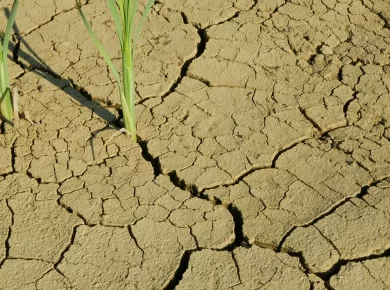India Position & Population Statistics
| Lies in South Asia | North of Equator |
| Latitude (8*4’ – 37*6’) N | Longitude (68*7’ – 97*25’)E |
| 2nd largest arable land (after US) | Population 17.6 % of the world |
| Area >> 3.28 million sq. km (2.4 % of world) | 7th Largest in Area |
| Southernmost Point >> Indira Point (6*45’)N | St. meridian >> Allahabad (82*3’)E |
| Kashmir – Kanyakumari >> 3214 km | Rann of Kutch – Arunachal Pradesh >> 2933 km |
| Mainland Coastline >> 6100 km | (Mainland + A & N + Lakshadweep ) coastline >> 7517 km |
- Population >> China > India > US > Indonesia > Brazil > Pakistan
- Area >> Russia > Canada > US > China > Brazil > Australia > India
- Religion >> Christian > Muslims > Hindus > Chinese folks > Buddhists
- Language >> Mandarin Chinese > English > Hindi > Spanish > Russian > Arabic
| Most populous >> UP | Largest Area >> Rajasthan | Male Population >> 51.54 % |
| Least Populous >> Sikkim | Least Area >> Goa | Female Population >> 48.46 % |
| Most literacy >> Kerala | Male literacy >> 82.14 % | Max Sex ratio >> Kerala |
| Least Literacy >> Bihar | Female literacy >> 65.46 % | Least Sex ratio >> Haryana |
Census 2011 |
||
| Population | 1.21 billion (17.5% of the world) | |
| Male | 623.7 million | |
| Female | 586.5 million | |
| Literacy | 74.04% | |
| Male | 82.14% | |
| Female | 65.46% | |
| Highest | Kerala > Lakshadweep > Mizoram | |
| Lowest | Bihar | |
| Highest –Female | Kerala | |
| Lowest – Female | Rajasthan | |
| Highest – Male | Lakshadweep | |
| Lowest – Male | Bihar | |
| Sex Ratio | 940 – Highest since 1971 | |
| Highest (State) | Kerala – 1084 | |
| Lowest (State) | Haryana – 877 | |
| Highest (UT) | Puducherry – 1038 | |
| Lowest (UT) | Dadra and nagar (775) | |
| Child Sex Ratio | 914 | |
| Highest | Mizoram – 971 | |
| Lowest | Haryana – 830 | |
| Density of Population | 382 per sq. km | |
| Highest | Delhi > Bihar > WB > UP | |
| Lowest | A & N > Arunachal Pradesh | |
| Most Populous State | Uttar Pradesh | |
| Least Populous State | Sikkim | |
| Most Populous UT | Delhi | |
| Least Populous UT | Lakshadweep | |
| Highest Growth of Population | Meghalaya | |
| Least Growth of Population | Nagaland (negative growth) | |
Factors of Population Distribution in India
- Physical factors such as Climate, Terrain and Availability of water
- North Indian Plains, deltas and Coastal Plains have climate suitable for agriculture and fertile plains hence have higher proportion of population
- Mountainous and forested regions of southern and central Indian States, Himalayan states, and some of the north-eastern states are less populated
- Development of irrigation (Rajasthan), availability of mineral and energy resources (Jharkhand) and development of transport network (Peninsular States) have resulted in moderate to high proportion of population.
- Socio-economic and historical factors
- Traditional settled agriculture and early human settlement has resulted in large population in river plains and coastal areas of India
- Development of transport and better agricultural development has resulted in large population in North Plains
- Industrialization and urbanization
- Metro cities of India have high concentration of population due to industrial development and urbanization.
- A large numbers of rural-urban migrants come to these towns
Phases of Growth of Indian Population
- 1901-1921 > Referred as a period of stationary phase of growth of India’s population
- 1911-1921 > Even recorded a negative growth rate
- Both the birth rate and death rate were high
- Major causes > Poor health and medical services, illiteracy of people at large, & inefficient distribution system of food
- 1921-1951 > Referred as the period of steady population growth
- An overall improvement in health and sanitation throughout the country
- Better transport and communication system improved distribution system
- The crude birth rate remained high in this period leading to higher growth rate than the previous phase
- 1951-1981 > Referred as the period of population explosion in India
- Caused by a rapid fall in the death rate but a high birth rate
- The average annual growth rate was as high as 2.2 %
- High birth rate was due to better living conditions & scientific developments
- Due to increased international immigration from Tibet, Bangladesh, Nepal and Pakistan; India’s growth rate exploded
- After 1981 till present, the growth rate has started slowing down gradually
- Due to decline in crude birth rate
- Due to an increase in the mean age at marriage
- Improvement in female literacy & empowerment
- Better scientific developments & access to common man
Problems due to Higher Population in India
- Unemployment
- Poverty
- Uneven Migration
- Urbanization problems
- Regional disparities
- Increase in crime rate
- Environmental Degradation
Impact of population growth on the Indian Economy
- Adverse effects on savings
- Unproductive investment
- Slow growth of Per Capita Income
- Underutilization of labour
- Growing pressure on land
- Adverse effect on quality of population
- Adverse social impact
Tribes of India
- Officially recognized by the Indian government as “Scheduled Tribes” in the Fifth Schedule of the Constitution of India
- Often grouped together with scheduled castes in the category “Scheduled Castes and Tribes”
- Eligible for certain constitutional benefits & perks
The Constitution of India, Article 366 (25) defines Scheduled Tribes as “such tribes or tribal communities or part of or groups within such tribes or tribal communities as are deemed under Article 342 to the scheduled Tribes (STs) for the purposes of this Constitution”.
| Tribe | State |
| Jarawa, Onge, Sentinelese | Andman |
| Shorn Pens, Holchu | Nicobar |
| Palaeo Mongoloids | Assam, Meghalaya, Mizoram, Nagaland, Manipur |
| Tibeto -Mongoloids | Sikkim and Arunachal Pradesh |
| Mundas, Santhals, Oraons | Chhotanagpur Plateau |
| Gonds, Kondhs | Central Vindhyachal + Deccan Plateau |
| Gaddi, Kinner, Phangwal, Lahuli | Himachal Pradesh |
| Jaunsari, Bhotia, Raji, Buxa, Tharu | Uttarakhand, Uttar Pradesh |
| Anal, Chiru, Konkanas, Kollam | Maharashtra |
| Mala and Savara tribes | West Bengal |
| Bhuiya tribe | Madhya Pradesh |
| Banjaras, Moghias and Sathiyas | Rajasthan |
| Bhil + Maldhari (Gir lions) | Gujrat |
| Oraon, Munda, Chero, Parchaiya, Santhal, Asuras | Bihar |
| Bhuiya, Baiga, Dharua, Gaaro, Ho, Koli, Lodha | Orissa |
| Bakarwal | J & K |
| Oorali, Sholagar, Irular and Badaga | Tamil Nadu |
| Hakki-Pikki, Korgas, Kurubas, Soliga | Karnataka |
| Kadars, Irulars , Paniyans, Korgas, ooralis | Kerala |
Common Features of Tribes
| Geographical isolation | live in cloistered, exclusive, remote and inhospitable areas such as hills & forests |
| Backwardness | livelihood based on primitive agriculture with low level of technology leading to povertyAre generally illiterate & unaware of world’s progress |
| Shyness of contact | Have a marginal degree of contact with other cultures and people |
| Have distinctive culture, language and religion | |
Problems of Tribal People
- Poverty
- Illiteracy
- Unemployment
- Dependence on forests
- Excessive discrimination
- Problem of land Alienation
- Indebtedness
- Bonded labour
- Malnutrition & other health related problems
Now a days, Large development projects undertaken by the government also encroaches upon their land.
Large scale displacements and unsatisfactory compensation and rehabilitation are common place, leading to further backwardness and seclusion. Because of their diversity they lack a common voice to bargain collectively
For more updates, explore the Geography . Feel free to share your thoughts and comments.
If you’re passionate about building a successful blogging website, check out this helpful guide at Coding Tag – How to Start a Successful Blog. It offers practical steps and expert tips to kickstart your blogging journey!








1 comment
thankyou very much to share the knowledge.